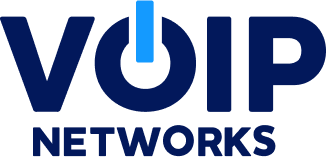As the pandemic begins to recede, many organizations are maintaining a remote or hybrid workforce. Most of these companies place a high priority on seamless communications between staff and clients, whether staff is on-site or working remotely.
In addition, many workers and organizations plan to either work remotely or to have a hybrid workforce with some employees on-site and some remote for the foreseeable future. The right technology allows them to communicate and collaborate from anywhere.
More Ways To Communicate
The best way to ensure seamless communication is to use a system with two types of capabilities:
- Compatibility with a wide range of devices
- Automation of key communication functions
The Cloud9 system by VOIP Networks, for example, allows people to use an IP phone, a soft client on a laptop or tablet, a mobile application on their cellphones, a Microsoft Teams client, a legacy POTS (plain old telephone service line, aka an old-school, analog phone), and many other devices. That flexibility is critical in a remote or hybrid environment.
The second capability allows a system to seamlessly switch between devices. For instance, many setups involve ring groups, where a call might “ring” on multiple devices. Others might automatically switch from an office desktop phone or softphone to a cell phone when the calendar or GPS coordinates show that the person is out of the office. If a staffer works on-site and remotely, calls and other communications will find them wherever they go.
Built-In Accountability
When organizations choose not to reopen the office, or current and prospective employees indicate that they prefer to work remotely, managers have legitimate concerns that productivity or collaboration may suffer.
Current technology can ensure that productivity and collaboration remain at pre-pandemic levels or improve.
Remote and hybrid systems, such as the types used in contact centers, can provide supervisors with in-depth oversight. Those supervisors can monitor the same metrics and reports that they do with an on-site system: when employees log in and out, when they take breaks, how many calls they take and their duration, the number of text messages, website chat messages, and email messages they handle, and other critical data. A remote scheduling system can show how many calls and appointments each staffer is handling and how they compare to their peers, or view when a mouse or keyboard isn’t being used for an extended period. Managers get the information they need, and callers will never know that the employee is working remotely.
Systems that make remote communications seamless offer another important advantage. Companies can recruit job seekers from a much wider area since commuting to an office or call center is no longer a requirement. Companies can also recruit staff from different time zones, allowing employees to provide extended coverage while working hours that are more convenient for them. In addition, broadening the prospect pool makes it easier for companies to recruit the best prospects.
Full-Service Support
The key to successful remote or hybrid workforces ultimately comes down to the right technology partner. You don’t want to ask employees to watch a video to set up their phones or hand IT staff a manual on how to integrate communications software with other business systems, such as MS Teams and CRM platforms like Salesforce, Microsoft Dynamics, etc. You want a technology partner that provides a bespoke experience, not a one-size-fits-all system.
With a responsive, in-house team of skilled trainers and project managers, VOIP Networks delivers white-glove service to ensure widespread adoption and worry-free implementation. Our technicians set up equipment, provide APIs and support to link systems, and offer ongoing training. We also provide different tiers of service for users who need basic functionality and those whose requirements are more sophisticated, allowing companies to pay for only the services they need. Customized licenses become even more important for hybrid workforces since home-office requirements often differ from on-site communication needs. We also include free programming changes for the life of the service to maximize flexibility, scalability, and cost savings.
Another huge benefit of VOIP Networks is our 100%, U.S.-based support team and our rapid response to emergencies and non-urgent requests. When the pandemic began, we worked around the clock to keep our clients operating, whether that meant integrating MS teams with their communications systems, setting up and rushing equipment to employees’ homes, or even helping to retool software and equipment to meet 911 requirements.
VOIP Networks designs, manages, and supports secure, scalable, and reliable cloud-based and on-premises telecommunications systems for a wide range of organizations. To see how we can transform your communications experience, contact us to discuss a free proof of concept demonstration for your organization.






